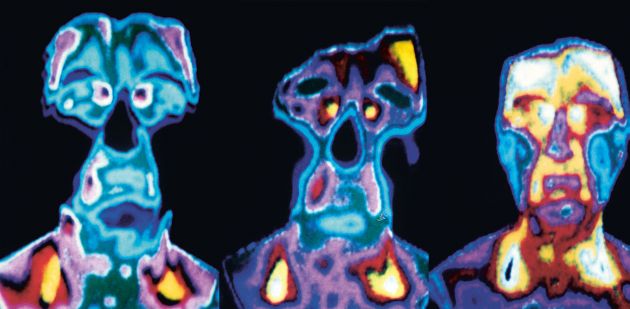Some forms of headaches resist pharmacological treatment. Surgical decompression of the peripheral sensory nerves offers genuine hope. How does it work?

"Several times a month, my head would be stuck in a vice for three, sometimes four days,” says Alain Beutler, second on the list of some fifty migraine patients treated at Lausanne University Hospital (CHUV). “It was taking an immense toll on my personal and professional life,” recalls the mechanic, who had suffered from migraines since childhood. Florence Lavanchy can commiserate. At age 38, the medical assistant had been having headaches for about twenty years. “Either the painkillers no longer brought any relief or they would knock me out,” she says. “On a scale of 1 to 10, my pain was a 7 or 8.”
Migraines and headaches are infinitely debilitating and can cause great distress. Despite significant progress in pain management, some patients do not respond to traditional therapies. Most of these treatments address only the intensity of attacks but provide no cure and can have serious side effects. Wassim Raffoul, chief of the Plastic and Hand Surgery Service at the CHUV, and clinic heads Giorgio Pietramaggiori and Sandra Scherer now offer solutions aimed at this category of drug-resistant patients.
“If no traditional therapy can provide relief or prevent pain, we carry out further screening before considering surgery.”
The technique used at the CHUV since 2013 is the fruit of pure chance. Dr Bahman Guyuron, based in Cleveland, developed the procedure following observations by plastic surgeons. Patients who had previously suffered from migraines reported a significant reduction in the frequency and severity of their pain after receiving Botox injections in the forehead. Clinical studies have confirmed that the paralysis of these facial muscles has the side effect of decompressing certain peripheral sensory nerves that can trigger migraine attacks.
Careful screening
“This type of surgery is not for all patients,” says Giorgio Pietramaggiori. “To treat migraines and other types of headaches, we consult neurologists to rule out all identifiable causes, including hormonal imbalance, poor blood flow and cervical herniations. If no traditional therapy can provide relief or prevent pain, we carry out further screening before considering surgery.”
The team uses two complementary techniques. When potential patients are suffering from a headache during their visit, they inject a short-term local anaesthetic into the areas causing the pain (forehead, temples, zygomatic arches, back of the neck or nose) to pinpoint the nerve endings. If the patient is not having an attack, the doctors inject botulinum toxin and ask patients to monitor their pain for one month. This step is used to observe how decompression affects one or more nerves. If pain intensity is reduced by at least 50%, surgery offers a viable solution.
The procedure performed by the CHUV surgeons involves the decompression of the nerves by removing a portion of the adjacent anatomical structures, such as the small muscle located between the eyebrows that is responsible for the notorious “lion’s wrinkle”. The operation releases the trigger point that can cause a migraine attack. This relatively short out-patient surgery can sometimes last longer than expected. “I was supposed to be on the operating table for 3 hours and 40 minutes. The operation ended up taking nearly 8 hours,” says Alain Beutler. “This patient is unusual,” says Wassim Raffoul. “He had trigger points located all around his skull and the back of his head. This case helped us hone the technique.” Now the operation rarely lasts more than two hours.
Successful results
Like in the United States, the success rate is high, with 85% of patients declaring significant relief. “Not only are my headaches less frequent, but they are two to three times less severe,” says Florence Lavanchy. Alain Beutler reports similar results: “The relief was immediate and spectacular. I can now work again without dreading a potential attack. I can finally spend my free time doing something other than lying down in the dark.” Benefiting from postoperative follow-up at the CHUV and occupational therapy, Alain Beutler makes progress every day. And it seems to be permanent. Fifteen years after the first surgical procedures performed in the United States, there have been no reports of the headaches coming back.
“The sensitive nerves involved are not removed or damaged,” says Sandra Scherer. “There are no visible side effects on the face, and patients don’t lose any feeling.” An important point. After a short convalescence, the operation leaves just a few undetectable scars, most of which are hidden on the scalp. Wassim Raffoul and his team expect this type of surgery to become more common in the future.
Do you suffer from severe, chronic, throbbing headaches? Nausea? Sensitivity to light or sound? Like Hippocrates and Lewis Carroll, you may be suffering from migraines, a condition that affects 20% of women and 8% of men. This chronic neurological disorder, resulting from blood flow problems in the brain, has various causes. Some are genetic, with 60% to 70% of patients reporting a family history of the condition. Everyday things – stress, fatigue, physical effort, smells – can trigger attacks lasting anywhere from a few hours to several days.